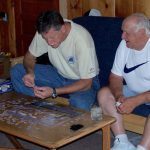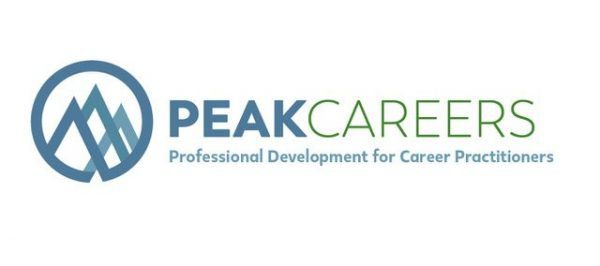Career decision making is like a 1000 piece puzzle with a number of pieces missing and only a vague picture on the box to work from. Each person thinks they have a complete puzzle to put together, but our job as a career counselor / coach / advisor is to help our clients find as many of the outside pieces as possible to give them the framework and some direction.
Too many people think career decision making is a linear process, but each person takes the puzzle pieces he / she can find and fits them together to begin to make a picture of themselves. As career practitioners we may use assessments to help fit pieces together, we may use open ended questions, we may use work or family history, but ultimately what we are doing is helping the clients / students find pieces that fit together.
What we do is help people find patterns in what often appears to be a pile of unrelated puzzle pieces. So many people feel like they are “undecided” or “all over the place”, but often we can see themes or patterns like all their jobs have been in the REALISTIC Holland type, or that they always talk about one industry such as the medical field, or that they gravitate towards jobs that allow them to work alone and think. Whatever the pattern or theme is, it is often difficult to people to see their own theme.

1000 pieces all over the table. This is going to require persistence. My father-in-law loved puzzles, and he would sit for hours and days picking up one piece and trying it in a number of places, sometimes connecting it to another, sometimes setting it down and picking up another piece. Our clients need to remember that discovering their next job may require trying different things over a long period of time. They may need to volunteer, or find part-time work, do informational interviews, try a job out for awhile, network, and even explore online for information. (I purposely put the online last here because so many of my clients start with that one and really should not. Applying to jobs online is easy, it’s quick, and it gives the impression that you are really working hard….you and 10,000 other people. The hard work comes when you make the effort to be personal, like a face-to-face information interview or volunteering.”
Occasionally when I work on a puzzle, I just pick up a piece and go with my intuition on where it may fit best. Career development often requires trusting intuition and encouraging our clients to “go with their gut”. “Does it feel right?” “What if you flipped a coin and it came up heads you take the “A” job? Does it feel right?” Often the answers are not clear (like our puzzle) and they are not lined up in a sequential ladder-like process. Sometimes you have to trust and let serendipity take you to a new place. Maybe the final picture of your puzzle doesn’t look like what you thought it would.
——————————————————–
Jim Peacock is the Principal at Peak-Careers Consulting and writes a monthly newsletter for career practitioners. Peak-Careers offers discussion-based online seminars for career practitioners focused on meeting continuing education needs for CCSP, GCDF and BCC certified professionals as well as workshops for career practitioners and individual career coaching.
Sign up here to receive my TOP 10 TIPS WHEN WORKING WITH AN UNDECIDED PERSON. You can also receive the career practitioners newsletter which includes a variety of career topics, industry news, interesting events, and more.




I tend to think of career development similar to baking a cake. You put all of the ingredients together and hope for an enjoyable outcome. If any of the ingredients, the process of putting them together or the proper temperature for cooking is off, the outcome is off.
Lorene,
when you are cooking sometimes you are missing ingredients at the house and have to substitute some times…and occasionally the results are surprising and positive, much like peoples career development. We need to encourage our clients to experiment and take risks sometimes. (This is the happenstance and serendipity coming out in me 🙂
Jim:
You know I am a disciple of PHT and the writings of John Krumboltz.
I can understand and agree with the above examples and analysis.
Thanks Don. Chance events are all around us but we have to look for them and embrace them. Not knowing what the “puzzle” looks like is just part of life.
“Just because the past didn’t turn out like you wanted it to, doesn’t mean your future can’t be better than you’ve ever imagined”. (Billy Cox.com)
We may not KNOW where we are going, but we can imagine it to be better and to embrace that unknown in a positive way.
Hello! I work at a community college. For the first time in several years, I will be teaching a career development course. I don’t think I will use MBTI or Strong as most of the student are 18-20 years old. I am open for suggestions that will keep students engaged in the process. I appreciate yout time and expertise.
Pam,
I taught a Career Decision Making class for 10 years at our local community college. Happy to send you my syllabus and notes. Email me at [email protected]
I actually did do the Strong Inventory and found a fairly accurate “MBTI look-alike” that worked well to get them thinking about how their personality could “fit” a job.
Jim
I’m retired from a community college, where I taught a Career Planning class.
Some thoughts:
1) Students really enjoyed doing a personality inventory, and you can use the free humanmetrics.com “Jung Personality” assessment which will provide an MBTI code. Just make sure you spend enough time explaining the assessment properly.
2) I assigned students a “scavenger hunt” after showing them a variety of online career exploration resources. For example, I’d have them research a career title, and use 3 resources to gather information such as average salary, education or training requirements, etc. as well as other types of activities that forced them to actually use these resources.
3) I always had 2 guest speakers: one was the transfer counselor to speak about transferring to 4 year schools, and the second would usually be someone from the business world, or a graduate who would speak about their career path. Students enjoyed seeing other people in front of the classroom besides yourself!
4) They were required to do an informational interview. I gave the assignment early on in the class to give them plenty of time. They had to report what they learned to the entire class.
Hope this helps!
I agree Barbara. I used humanmetrics as well. I introduced ONET and OOH and talked about “discovering things by accident” using them. I had a “game” I called “hot and cold”. Sent them to OOH or ONET and them start with an occupation there were interested in and the had them click on RELATED OCCUPATIONS tab…fairly quickly without reading too much, just to see what their ‘theme’ was (i.e. did they like the medical side of nursing or the helping side)
Great points Barbara, I also had them do an info interview and told them it would be the area they would learn the most.
Great analogies!
Thanks Mary, nice to hear you enjoyed them.